Source: website Williams Advanced Engineering | Project Triumph TE-1 was unveiled in a completed prototype form. The unique partnership between Triumph Motorcycles, Williams Advanced Engineering (WAE), Integral Powertrain Ltd and WMG of the University of Warwick (and funded by the Office for Zero Emission Vehicles through Innovate UK), is set up to create ground-breaking developments in the field of specialised electric motorcycle engineering and innovative integrated technology design.
The completed demonstrator marks the official end of the collaboration phase of the TE-1 project and is now fully ready for the next Triumph-led phase of the project to begin – the live test program – which will showcase all the latest and latest innovations for the first time.
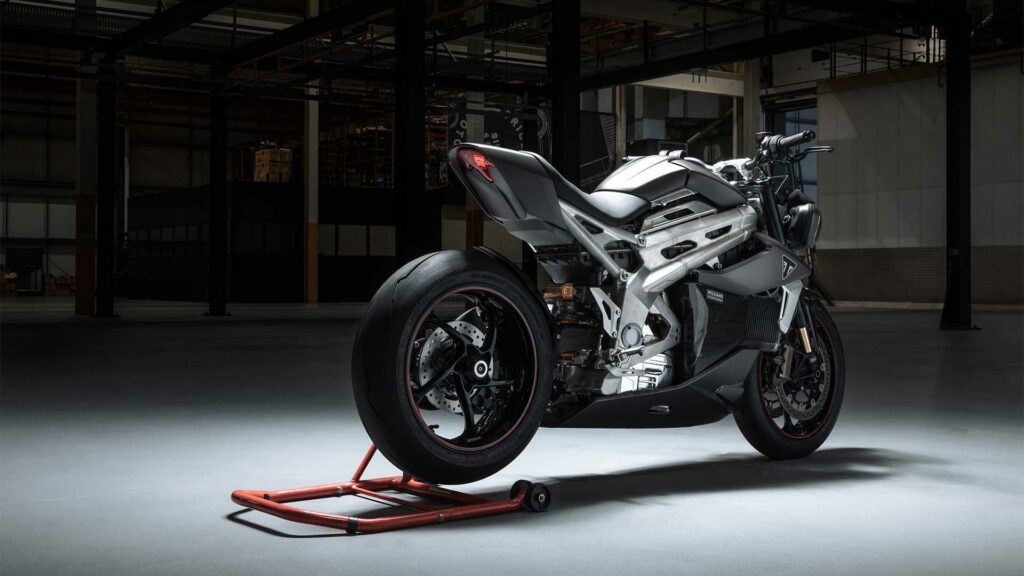
The WAE battery pack includes a special cell packaging for optimum center of gravity, vehicle control unit, DCDC converter, integrated cooling, charging port and stylized carbon covers. This all-new WAE-developed powertrain will set new standards for electric bicycle performance, with industry-leading power, efficiency, charge time and range.
Fully responsible for TE-1’s lightweight, groundbreaking battery system, WAE has taken a holistic approach to development, allowing riders to use more electrical power for longer, giving them access to excellent performance regardless of battery charge, in addition to fast charging times.
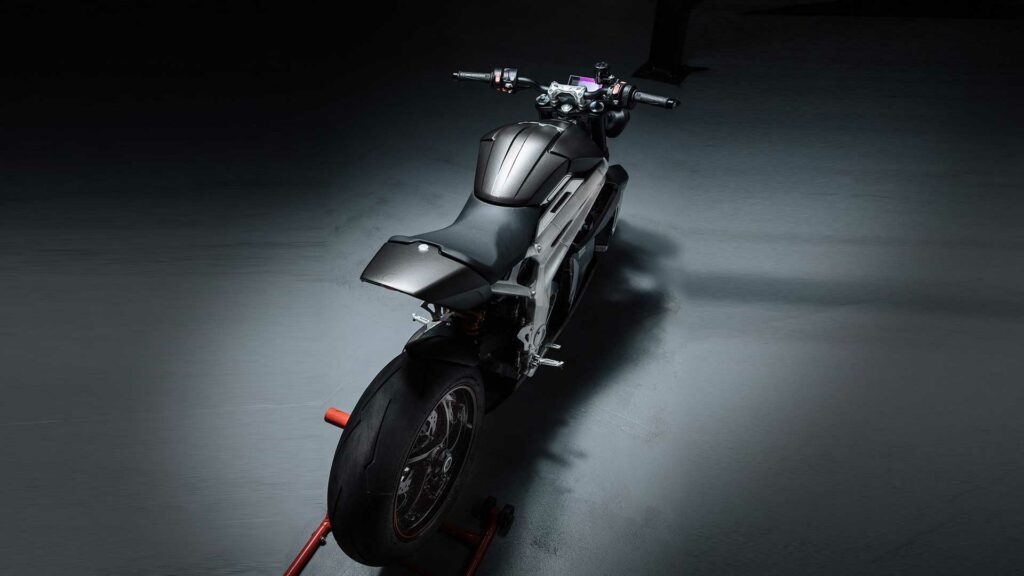
The all-new battery has a peak power of 170 kW and a continuous power of 90 kW, with a capacity of 15 kWh. This allows the motor to deliver 130 kW peak power and 80 kW continuous power. Industry-leading system cooling combined with the optimal balance of power and energy means TE-1 can give the rider more electrical power for longer and deliver excellent performance regardless of battery charge. The 360-volt system also enables a fast charge time of less than 20 minutes (0-80%), which is combined with a market leading target range.
WAE optimized the layout of the battery module to balance mass and positioning in the prototype chassis, taking into account center of gravity, space and its relationship to the powertrain and charging approach. A new and custom vehicle control unit is integrated into the battery pack to minimize weight and packaging.
Key project outcomes during this phase include test results exceeding current benchmarks and targets set by the UK Automotive Council for 2025, providing a platform with great potential for future development of electric motorcycle performance.
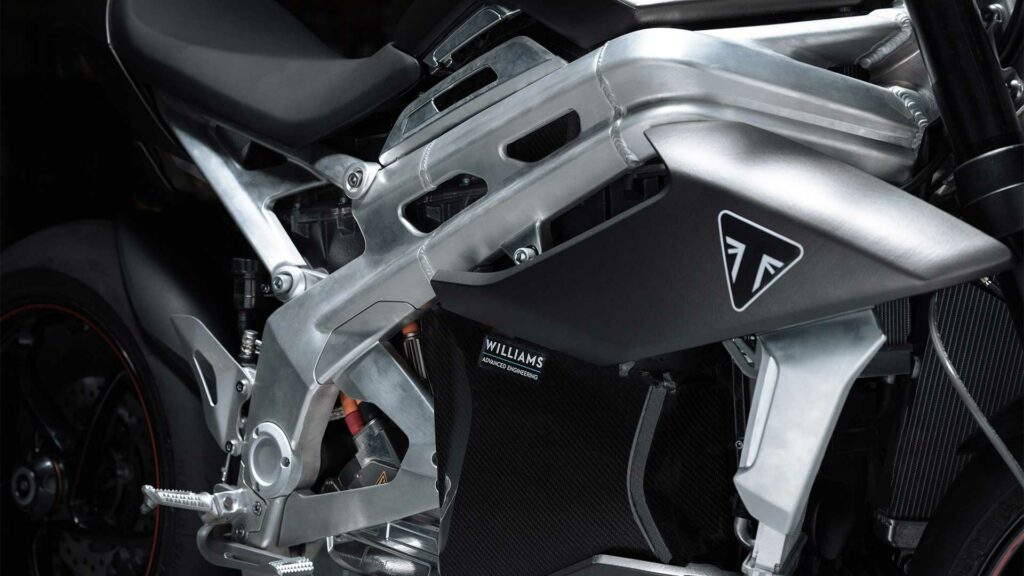
The overall objective of the TE-1 project was to develop the capability of electric motorcycles, to contribute to Triumph’s future electric motorcycle offerings, to drive innovation, capability and new intellectual property, and to raise the credibility and profile of British industry and design.
With the completion of this prototype, the full live test phase of the TE-1 project now begins. Over the next six months, the prototype demonstrator will conduct an extensive live testing program within Triumph’s state-of-the-art facilities, including rolling road and track testing designed to guide the final setup and calibration of the prototype demonstrator.
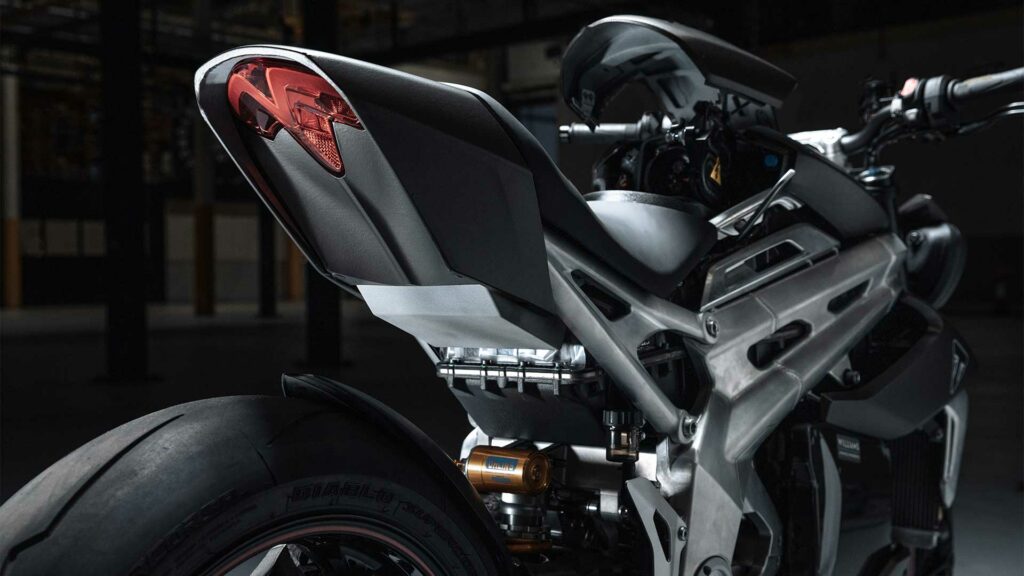
At the end of the live testing phase, expected in summer 2022, the prototype will be updated with its final body panels ready for active trackside demonstration. Final specifications and test results will be published at this time, along with insights and key facts about how the TE-1 meets project goals, including ultimate battery and range performance.
“It was really exciting to see the progress made during Phase 3 of Project Triumph TE-1, with the final motorcycle prototype now being field tested. Everyone involved in Triumph are proud to have been part of this innovative UK partnership. Personally, I am excited about the results we have already achieved with our partners and the exciting preview of the potential electric future to come.” said Nick Bloor, CEO of Triumph. “We look forward to continuing the ambitious and innovative work on the TE-1 demonstrator prototype during the live testing phase and sharing the result with Triumph fans around the world.”
Following the completion of Phase 2 of the program in March 2021, which included delivery of a fully bench-tested battery, WAE has now completed work on Phase 3, which included some critical gateways for the project. In addition to supporting a number of hardware and software solutions; By specifically integrating Triumph’s motor control software to work in harmony with WAE’s controller and battery management system, the team has improved the integration of the mechanical and electrical solutions; optimization of battery layout to balance mass and positioning in the chassis.
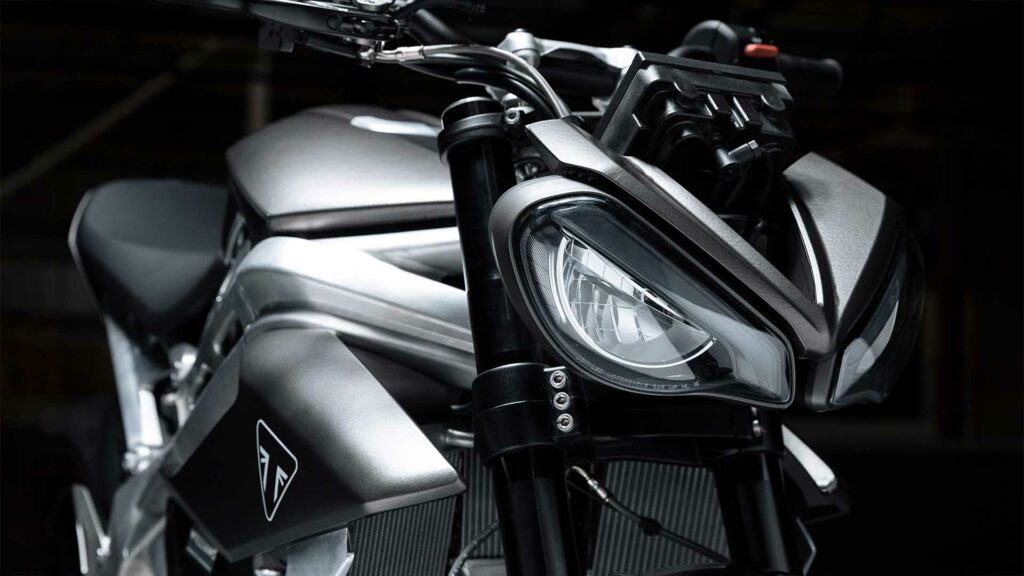
The demonstration bike is now undergoing final battery level validation and calibration to ensure performance results meet best-in-class power, energy density and rider goals without compromising performance at low charge levels.
“After an extensive period of testing, we are delighted to finally see the results of our work on a physical bike. Working with the Triumph team has continued to push the boundaries of battery technology, always keeping the rider in mind,” said Dyrr Ardash, Head of Strategic Partnerships, Williams Advanced Engineering. “Because we designed the battery from the ground up, there has been no compromise on design and we have been able to maximize the potential of advanced technology, with both performance and all-important range.”
Pictures: Triumph Motorcycles